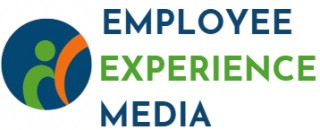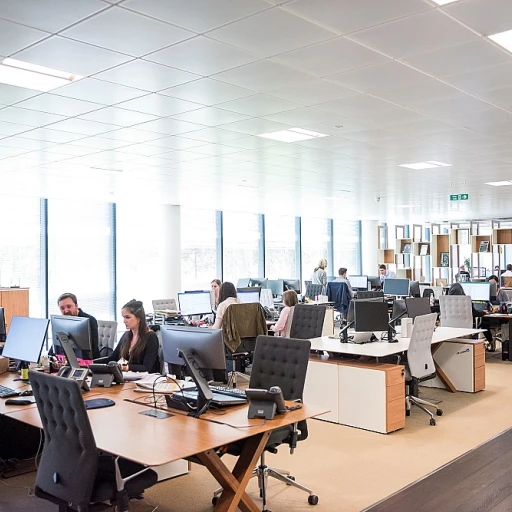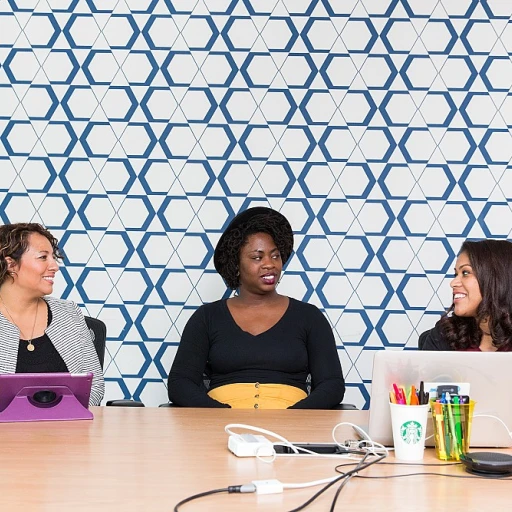
The Modern Communication Landscape
Understanding the Complexities of Modern Communication
The intricate web of today's communication environment presents a myriad of challenges for both the speaker and the listener. As technology evolves at a dizzying pace, so too does the way people exchange messages. Once straightforward interactions have become layered with multiple communication channels and a diverse range of communication styles. This shift, while promising in terms of connectivity, also brings new barriers that complicate the listening process. One of the key aspects of this environment is the contrast between high context and low context communication. In high context settings, messages are often embedded within the socio-cultural framework, requiring listeners to "read between the lines" or rely heavily on implicit cues. Conversely, low context communication is more direct, with messages explicitly stated. Navigating these differences demands active listening and adaptability, which are not always innate skills for everyone. Moreover, the growing use of digital tools can create barriers that hinder effective listening. The absence of physical cues such as eye contact and body language in digital communication can lead to distorted listening experiences. As a result, the listener must rely predominantly on the verbal components of the message, an adjustment some find challenging. Adding to the complexity are distractions that introduce psychological noise, interfering with the listener's ability to focus on the speaker's message. Multitasking and the constant influx of notifications can fragment attention, leading to pseudo listening or superficial engagement with a person who is speaking. In this expanded communication landscape, developing effective listening skills is crucial. Active listening, critical listening, and empathetic listening all come into play to help improve interaction. However, these skills often require deliberate practice and application to overcome the barriers to effective listening and contribute to successful communication. For those navigating these waters, resources on effective communication with stakeholders offer valuable insights into refining communication abilities and fostering better understanding in professional interactions.Barriers to Effective Listening
The Challenges of Attentive Listening
In today's fast-paced communication environment, there are numerous barriers that hinder effective listening. Understanding these barriers is crucial to improving our communication skills and enhancing the overall employee experience. Let's delve into the common obstacles that people face when trying to listen attentively and effectively.
Environmental Noise and Distraction
Environmental noise is one of the most prevalent barriers in the listening process. Whether it's the buzzing of electronic devices, background chatter, or the blur of activities in open office spaces, these distractions can significantly impede a listener's ability to focus on the speaker's message. Creating spaces that minimize these distractions is essential for fostering effective communication.
Psychological Factors
Barriers aren't just physical; they can also be psychological. This includes factors such as pre-existing biases, stress, or personal issues that cloud a person's ability to concentrate. To mitigate these barriers, individuals can practice mindfulness and empathetic listening, which helps them focus more acutely on the messages being conveyed.
Communication Context
The context in which communication occurs greatly affects listening. In high-context cultures, non-verbal cues and implied messages hold significant weight, whereas in low-context cultures, spoken words are more explicit. Being aware of cultural differences and non-verbal communication cues can aid in avoiding misinterpretations.
Listening Skills and Behaviors
Listening skills and behaviors also play a crucial role. Many tend to engage in pseudo listening—acting as though they are listening while their mind is elsewhere. Cultivating active and critical listening skills can transform how a message is received and understood, emphasizing the importance of remaining present during conversations.
Time Pressures
The demands of time can be a significant barrier to effective listening. People often feel rushed, leading to incomplete or distracted listening. Allocating adequate time for important interactions and using active listening techniques such as asking clarifying questions can greatly improve one's ability to grasp and understand the intended message.
Overcoming these barriers requires a conscious effort to develop better listening practices, which in turn leads to more successful communication and a more positive employee experience. For more insights on effective communication strategies, check out who should be involved in communication planning for enhanced employee experience.
The Impact of Poor Listening on Employee Experience
The Consequences of Ineffective Listening in the Workplace
In today's fast-paced communication environment, the ability to listen effectively is more crucial than ever. Poor listening can significantly impact the employee experience, leading to misunderstandings, decreased productivity, and even workplace conflict. When a listener fails to fully engage with a speaker, the message can become distorted, resulting in a breakdown of communication.
For example, when a person engages in pseudo listening, they may appear attentive but are not truly processing the speaker's message. This behavior can create barriers to effective communication, as the listener misses critical information and context. The lack of active listening skills can also lead to psychological noise, where personal biases and assumptions interfere with the listening process.
Moreover, ineffective listening can hinder the development of strong interpersonal relationships within the workplace. When employees feel unheard, it can lead to frustration and disengagement. This is particularly true in high context communication environments, where non-verbal cues and eye contact play a significant role in understanding the speaker's intent.
To foster a positive employee experience, it is essential to address these barriers and promote effective listening practices. Encouraging empathetic listening and critical listening skills can help bridge the gap between speakers and listeners, ensuring that messages are accurately received and understood. By prioritizing these skills, organizations can enhance the overall communication process and create a more inclusive and supportive work environment.
Strategies to Enhance Listening Skills
Improving Listening Skills in Challenging Communication Environments
In today’s fast-paced communication landscape, improving listening skills is more critical than ever. However, barriers often hinder effective listening, affecting the overall interaction between speakers and listeners. Here are several strategies that can be implemented to enhance your ability to truly understand messages and become a better listener.
- Practice Active Listening: It involves being fully present and engaged during conversations. This means making eye contact, nodding, and reacting appropriately to the speaker's message. Active listening helps the listener focus on the speaker’s words without being distracted by external factors or psychological noise.
- Overcome Barriers: Be mindful of common barriers that can distort the listening process, such as poor attention span or personal biases. Identifying these barriers is the first step towards reducing their impact on communication. For example, avoiding pseudo listening—where the listener pretends to pay attention—can significantly improve the quality of the interaction.
- Develop Critical Listening Skills: Engaging in a more evaluative approach is essential for understanding complex messages. A critical listener assesses what is being said, identifying possible assumptions or implications. This allows for more meaningful interactions and helps avoid misinterpretations.
- Use Empathetic Listening: Emphasize understanding the speaker’s emotions and perspectives. By practicing empathetic listening, the listener can build a more profound connection and comprehension of the speaker's experience, allowing for a more respectful and effective exchange.
- Ask Clarifying Questions: By asking questions, the listener can ensure that they have correctly understood the message. This not only confirms listening accuracy but also demonstrates to the speaker that their words are valued and taken seriously.
- Allocate Sufficient Time: Ensure that enough time is dedicated to listening. Rushed interactions can lead to miscommunication and hinder successful message comprehension. Prioritizing time for clear communication can dramatically impact the outcome of the listening process.
Incorporating these strategies into everyday communication can help break down barriers and promote a more effective exchange of ideas. Improving listening skills not only enhances personal interactions but also contributes positively to the organizational culture by ensuring a more cohesive communication environment.
The Role of Leadership in Fostering a Listening Culture
Leadership's Influence on Listening Culture
Leadership plays a pivotal role in shaping the listening culture within an organization. When leaders prioritize effective listening, it sets a standard for the entire team. This commitment to listening can break down barriers that often hinder communication, such as psychological noise and distorted listening.
Leaders can model active listening by maintaining eye contact, asking relevant questions, and providing feedback that shows they understand the speaker's message. This not only encourages others to listen actively but also fosters an environment where people feel heard and valued.
Moreover, leaders should be aware of the different contexts of communication, such as high context and low context, which can affect how messages are received and interpreted. By understanding these nuances, leaders can tailor their communication strategies to ensure clarity and reduce the chances of pseudo listening or bad listening behaviors.
Another critical aspect is the allocation of time for listening. Leaders who dedicate time to listen to their team members demonstrate that they value their input. This practice can significantly enhance the employee experience by making individuals feel respected and appreciated.
Finally, leadership training programs focused on developing listening skills can be instrumental. These programs can help leaders become critical listeners who can navigate complex interactions and overcome barriers to effective listening. By investing in these skills, leaders can create a more empathetic and effective communication environment.
Technological Solutions to Support Better Listening
Leveraging Technology for Enhanced Listening
Today's communication environment is swarming with potential distractions that act as barriers to effective listening. However, leveraging the right technology can significantly support and enhance listening practices in the workplace.- Tools for Active Listening: Digital tools like note-taking apps can facilitate active listening by allowing listeners to jot down key messages without breaking the communication process flow. These tools can help listeners remember important details while still being engaged with the speaker.
- Platforms for Collaboration: Utilizing collaborative platforms creates a more structured environment that emphasizes clear and effective communication. These platforms can serve as mediums for asynchronous communication, giving people the time needed to process information carefully before responding, improving the listening process in high context and low context environments.
- Virtual Meetings and Video: Video conferencing tools can bridge the psychological noise that occurs in remote communication. They enable the listener to observe non-verbal cues such as eye contact, which is crucial for critical listening. These tools also allow for the recording of discussions, helping listeners revisit and accurately interpret speaker messages.
- AI and Machine Learning: Modern technologies like artificial intelligence can help overcome distorted listening by providing real-time transcription and highlights of key points in a conversation. This allows listeners to focus on interaction and engagement rather than being distracted by trying to capture all details.
- Personalized Learning Platforms: Technology allows for personalized training modules designed to boost listening skills and make critical listeners. These modules often include simulated scenarios, quizzes, and feedback mechanisms that enable the listener to become more adept in active and empathetic listening.













